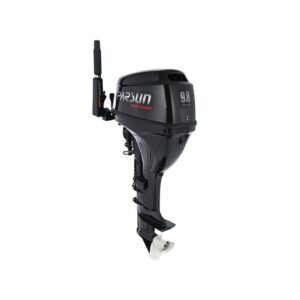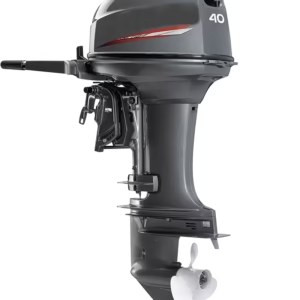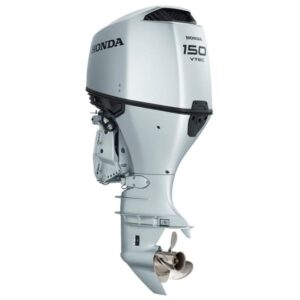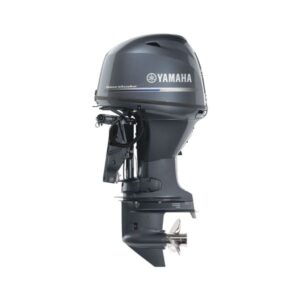Yamaha Outboard Motors
Yamaha Outboard Motors have earned a global reputation for reliability, fuel efficiency, and cutting-edge marine technology. Whether you’re a commercial fisherman, weekend boater, or water sports enthusiast, Yamaha offers a wide range of outboard motors to suit every need. In this comprehensive guide, we’ll explore the history, features, types, and advantages of Yamaha outboard engines, along with tips for maintenance and buying.
$1,550.00
Yamaha Outboard Motors: The Ultimate Guide for Marine Enthusiasts
Yamaha Outboard Motors have earned a global reputation for reliability, fuel efficiency, and cutting-edge marine technology. Whether you’re a commercial fisherman, weekend boater, or water sports enthusiast, Yamaha offers a wide range of outboard motors to suit every need. In this comprehensive guide, we’ll explore the history, features, types, and advantages of Yamaha outboard engines, along with tips for maintenance and buying.
Table of Contents
-
Types of Yamaha Outboard Motors
-
Portable Series
-
Midrange Series
-
High Power Series
-
VMAX SHO Series
-
XTO Offshore Series
-
1. The Legacy of Yamaha Outboard Motors
Yamaha began manufacturing outboard motors in 1960. With a strong focus on innovation and customer satisfaction, Yamaha quickly became one of the most trusted brands in the marine industry. Today, Yamaha outboards are used worldwide for recreational boating, fishing, rescue missions, and commercial applications.
From the initial P-7 model to today’s powerful 450-horsepower XTO Offshore engines, Yamaha has continually pushed boundaries with groundbreaking technologies.
2. Key Features of Yamaha Outboards
Yamaha outboard motors stand out for their performance and durability. Here are some key features:
-
Fuel Efficiency: Yamaha’s EFI (Electronic Fuel Injection) and Direct Injection technology offer better fuel economy.
-
Reliability: Renowned for robust engineering and long-term durability.
-
Quiet Operation: Yamaha uses noise-reduction designs like Shift Dampener Systems (SDS).
-
Digital Controls: Yamaha’s Helm Master® EX system enhances navigation and control.
-
Corrosion Resistance: Yamaha’s special anti-corrosion coating increases motor longevity.
-
Maintenance Alerts: The Yamaha Maintenance Management System (MMS) provides real-time alerts and diagnostics.
3. Types of Yamaha Outboard Motors
Yamaha offers a full spectrum of outboard motors to meet diverse marine needs.
Portable Series (2.5–25 HP)
Ideal for small boats, tenders, and inflatables, these lightweight motors are easy to carry and operate.
-
Models: F2.5, F4, F6, F8, F9.9, F15, F20, F25
-
Highlights: Lightweight, fuel-efficient, easy to start
Midrange Series (30–90 HP)
Designed for medium-sized boats, midrange motors provide a balance of power and economy.
-
Models: F30, F40, F50, F60, F70, F75, F90
-
Best for: Pontoon boats, runabouts, aluminum fishing boats
High Power Series (115–300 HP)
High-performance outboards perfect for offshore fishing and larger recreational boats.
-
Models: F115, F150, F175, F200, F225, F250, F300
-
Tech features: Variable Camshaft Timing (VCT), digital electronic controls
VMAX SHO Series (90–250 HP)
Built for high-speed freshwater fishing, the VMAX SHO (Super High Output) series delivers superior acceleration.
-
Models: VF90, VF115, VF150, VF175, VF200, VF225, VF250
-
Notable for: Tournament-ready performance, lightweight build
XTO Offshore Series (425–450 HP)
The most powerful outboard in Yamaha’s lineup, designed for big offshore boats.
-
Models: XTO 425, XTO 450
-
Features: Integrated electric steering, digital electronic control, high fuel efficiency
4. Why Choose Yamaha Outboards?
Here are compelling reasons why Yamaha stands out among marine engine brands:
-
Proven Reliability: Yamaha’s engines are known to last for thousands of hours with proper maintenance.
-
Advanced Innovation: From joystick steering to auto-trim features, Yamaha leads in marine tech.
-
Extensive Dealer Network: Yamaha has thousands of authorized dealers and service centers globally.
-
Comprehensive Warranty: Up to 3 years standard warranty with options to extend.
-
Excellent Resale Value: Yamaha outboards retain value better than most competitors.
5. Top Yamaha Outboard Models in 2025
1. Yamaha F300 Offshore
-
HP: 300
-
Weight: 562 lbs
-
Best for: Offshore boats, center consoles
-
Key features: Digital throttle and shift, corrosion protection, quiet performance
2. Yamaha VMAX SHO VF150
-
HP: 150
-
Weight: 480 lbs
-
Best for: Bass boats, bay boats
-
Key features: Lightweight, fast acceleration, low emissions
3. Yamaha F70 Midrange
-
HP: 70
-
Weight: 253 lbs
-
Best for: Pontoon, small fishing boats
-
Key features: Class-leading weight-to-power ratio, excellent fuel economy
4. Yamaha F25 Portable
-
HP: 25
-
Weight: 126 lbs
-
Best for: Jon boats, inflatables
-
Key features: Pull or electric start, manual or power tilt
5. Yamaha XTO Offshore 450
-
HP: 450
-
Weight: 999 lbs
-
Best for: Luxury offshore yachts
-
Key features: Direct injection, integrated electric steering, auto-trim
6. Maintenance Tips for Yamaha Outboards
Proper maintenance ensures your Yamaha outboard runs efficiently and lasts longer. Here’s a basic checklist:
Daily Checks
-
Inspect fuel levels and fuel lines
-
Check oil and coolant levels
-
Look for any visible leaks
-
Flush engine with fresh water after use (especially saltwater)
Periodic Maintenance
-
Every 100 Hours:
-
Change engine oil and filter
-
Replace fuel/water separator
-
Inspect spark plugs
-
Check propeller shaft and lower unit
-
-
Every 300 Hours / Annually:
-
Replace impeller
-
Service cooling system
-
Full diagnostic scan
-
-
Winterizing:
-
Add fuel stabilizer
-
Drain fuel system
-
Fog cylinders
-
Store upright in dry place
-
💡 Tip: Always refer to your Yamaha owner’s manual or use certified Yamaha marine service centers for scheduled maintenance.
7. Buying Guide: New vs. Used Yamaha Outboards
Buying New Yamaha Outboards
-
Pros:
-
Full warranty
-
Latest features and fuel efficiency
-
No prior wear or damage
-
-
Cons:
-
Higher initial cost
-
Buying Used Yamaha Outboards
-
Pros:
-
Lower upfront cost
-
May include accessories (controls, props, etc.)
-
-
Cons:
-
Unknown history
-
May need repairs or reconditioning
-
What to Check When Buying Used
-
Hours of operation
-
Compression test results
-
Service history
-
Corrosion or water intrusion
-
Serial number and registration







There are no reviews yet.